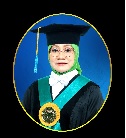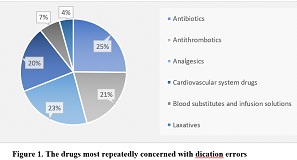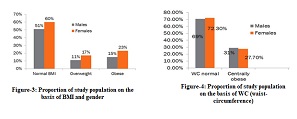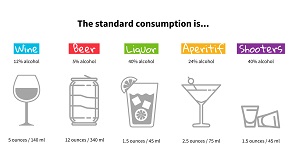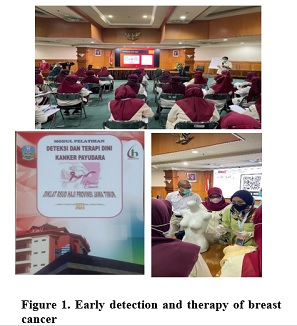The Influence of Intant Massage to Weight Gains in Low Birth Weight Infant (LBW) : A Systematic Review
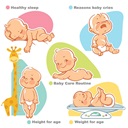
Growth and development is a significant phase that cannot be replicated, underscoring the need for meticulous attention, particularly for those born with low birth weight (LBW). LBW can be stimulated using infant massage. This research aimed to evaluate the impact of infant massage on weight gain among LBW infants. This is a systematic review using PICOS framework, investigating studies from 2018 to 2023 in databases including Cochrane, PubMed, ScienceDirect, and Scopus. The inclusion criteria involved full-text access and the keywords low birth weight, weight gain, and massage. The initial search yielded 1913 literature, which were screened based on publication year and type, resulting in 122 articles. After being examined, 119 articles were excluded due to duplication, using non-English language, involving non-LBW, different outcomes, and non-RCT, leaving three articles. The assessment of literature quality was conducted using the JBI Critical Appraisal Checklist for Systematic Reviews and Research Syntheses. The results of outcome measurements and group comparisons across the three studies exhibited congruence. In conclusion, the finding indicated that infants who underwent massage intervention exhibited weight gain, as did those who did not undergo such intervention. Furthermore, infants who received massage intervention experienced a more pronounced increase in weight compared to their counterparts who did not undergo massage intervention.
INTRODUCTION
Infants with low birth weight (LBW) are characterized as newborns whose birth weight is below 2,500 grams, irrespective of their gestational age. Low birth weight constitutes a significant contributor to heightened rates of mortality, morbidity, and disability among neonates, infants, and children, imparting lasting effects on their future well-being. Potential enduring consequences stemming from LBW encompass developmental disorders, visual impairments (retinopathy), hearing deficits, chronic lung conditions, elevated morbidity rates, heightened occurrence of congenital anomalies, and necessitate specialized medical interventions1-71234567.
Infants with low birth weight (LBW) face an elevated susceptibility to morbidity, hindered growth, impaired cognitive development, reduced adult stature, and an amplified likelihood of developing chronic illnesses during their later years. The progression of growth and development in infants and toddlers is profoundly impacted by the satisfaction of their fundamental requirements. These primary needs are often referred to as the "triple A" – encompassing the imperative necessities for nourishment, emotional connection, and early cognitive stimulation1,8-111891011. Parents have the opportunity to provide effective growth and development stimulation to their children right from infancy. Through positive interaction and appropriate activities, parents can offer beneficial stimulation that aids in unlocking their children's full potential and fostering optimal development12,131213.
A form of stimulation that the community has embraced is infant massage. Massage holds a historical lineage as one of the oldest therapeutic practices globally. Serving as an artistic facet of healthcare and medicine, massage can alleviate stiff joints and establish a harmonious connection among the body's organs through tactile engagement. Through the application of massage techniques to circulatory muscle tissue, the potential for enhancing muscle condition and restoring proper muscle positioning arises. This, in turn, can contribute to the optimization of organ function within the body, allowing for improved overall bodily functionality14-16141516.
Multiple research has demonstrated a notable impact of infant massage on the weight of infants aged 3 to 6 months, substantiated by statistical test outcomes17-2917181920212223242526272829. Research by Majid also indicated that baby massage is linked to weight gain in infants3030. Nevertheless, these outcomes diverge from the observations made in the study conducted by Fauziyah3131. The study by Fauziyah, in contrast, reported no discernible impact of administering baby massage on fluctuations in infant weight. These divergent findings between the two studies prompted the current research, aimed at meticulously analyzing the influence of baby massage on body weight in infants with low birth weight (LBW).
MATERIALS AND METHODS
The electronic database was searched through four sites, the Cochrane, PubMed, Science Direct, and Scopus. Based on the keywords (Low Birth Weight OR Infant Low Birth Weight OR Neonates LBW) AND (Weight gain OR Increase Weight OR Weight gain) AND (Massage OR Infant Massage OR Developmental Care Massage) we obtained 1,913 records. These results were then screened using the year criteria and obtained 122 articles. We excluded 119 records as 7 of them were duplicated articles, 1 article not in English, 50 articles with subjects other than infant low birth weight, 47 articles discussing different outcomes, and 14 articles with research designs other than the Randomized Controlled Trial. Three full-text articles were finally obtained and analyzed in this systematic review.
RESULTS
Figure 1.PRISMA Flow Diagram
| Question | Reference | ||
|---|---|---|---|
Montaseri et al., (2020)3232 | Liao et al., (2021)3333 | Naseh et al., (2023)3434 | |
Was the trial design appropriate, and any deviations from the standard RCT design (individual randomization, parallel groups) | Yes | Yes | Yes |
Was appropriate statistical analysis used? | Yes | Yes | Yes |
Were outcomes measured in a reliable way? | Yes | Yes | Yes |
Were outcomes measured in the same way for treatment groups? | Yes | Yes | Yes |
Was follow up complete and if not, were differences between groups in terms of their follow up adequately described and analyzed? | Yes | No | Yes |
Was follow up complete and if not, were differences between groups in terms of their follow up adequately described and analyzed? | Yes | No | Yes |
Were treatment groups treated identically other than the intervention of interest? | Yes | No | Yes |
Were outcomes assessors blind to treatment assignment? | Yes | Yes | Yes |
Were those delivering treatment blind to treatment assignment? | No | Yes | No |
Were participants blind to treatment assignment? | No | Yes | No |
Were treatment groups similar at the baseline? | Yes | Yes | No |
Was allocation to treatment groups concealed? | Yes | Yes | Yes |
Was true randomization used for assignment of participants to treatment groups | Yes | Yes | Yes |
Score of Yes | 13 | 10 | 10 |
We assessed the quality of the literature with the JBI Critical Appraisal Checklist for Systematic Reviews and Research Syntheses. The three obtained articles have met the inclusion criteria, the research design was appropriate as they used Randomized Controlled Trials and there was a standard deviation from this RCT design. The statistical analysis had been carried out correctly, and also the results from the outcome and group comparisons of these three studies agreed. In the article by Montaseri et al.,(2020)3232there were 13 checklists of yes, in the article by Liao et al.,(2021)3333there were 10 checklists of yes, and the article by Naseh et al.,(2023)3434found 10 checklists of yes (Table 1).
| No | Article | N | Group | Initial Weight | Final Weight | ||
|---|---|---|---|---|---|---|---|
Arisman, M. (2009) Gizi Dalam Daur Kehidupan. Jakarta: EGC.
Eshete, A., Alemu, A. dan Zerfu, T. A. (2019). Magnitude and Risk of Dying among Low Birth Weight Neonates in Rural Ethiopia: A Community-Based Cross-Sectional Study. International Journal of Pediatrics, 9034952, hal. 1–8. doi: 10.1155/2019/9034952.
Guyton, A. . dan Hall, J. E. (2011) Buku Ajar Fisiologi Kedokteran. Edisi 12. Jakarta: EGC.
Lee, S.-H. dan Thiel, M. (2017). Relations between GDP growth and environmental performance using latent growth curve model applied for environmental Kuznets curve. International Journal of Sustainable Economy, 9, hal. 87. doi: 10.1504/IJSE.2017.083362.
Menkes (2012) Survei Demografi dan Kesehatan Indonesia 2012. Jakarta.
Menkes (2018) Laporan Nasional Riset Kesehatan Dasar 2018. Jakarta.
WHO (2011). Guidelines on optimal feeding of low birth-weight infants in low-and middle-income countries. Geneva: WHO, hal. 16–45.
Maryunani, A. (2013) Asuhan Kegawatdaruratan Maternal & Neonatal. Jakarta: Trans Info Media.
Menkes (2014) Peraturan Menteri Kesehatan Republik Indonesia Nomor 41 Tahun 2014 Tentang Pedoman Gizi Seimbang. Jakarta.
Proverawati, A. dan Ismawati, C. (2010) Berat Badan Lahir Rendah. Yogyakarta: Nuha Medika.
WHO (2013). Counselling for maternal and newborn health care: a handbook for building skills. Geneva: WHO, hal. 158.
Hidayat, A. A. (2010). Tesis Pengaruh Terapi Sentuhan Terhadap Suhu Dan Frekuensi Nadi Bayi Prematur Yang Dirawat Di Ruang Perinatologi RSUD Kabupaten Tangerang. Jakarta: Perpustakaan Universitas Indonesia.
Noviyani, P. E., Jayatmi, I., & Herliana, I. (2018). Hubungan Peran Orang Tua dan Pola Asuh Makan terhadap Perkembangan Balita. Jurnal Ilmiah Kebidanan Indonesia, 8(1),hal. 1–7.
Badiee, Z., Samsamshariat, S. dan Pormorshed, P. (2012). Effect of Massage on Weight Gain in Premature Infants. Iranian Journal of Neonatology, 3(2), hal. 57–62.
Carolin, B. T., & Agustin, C. (2020). Pijat Bayi dapat Menstimulus Peningkatan Berat Badan pada Bayi. Jurnal Ilmiah Kebidanan Indonesia, 10(2), hal 28–33.
Lestari, K. P., Nurbadlina, F. R., Wagiyo., & Jauhar, M. (2021). The effectiveness of baby massage in increasig infant’s body weight. Journal of Public Health Research, 10(1), hal. 2332.
Arora, J., Kumar, A. dan Ramji, S. (2005). Effect of oil massage on growth and neurobehavior in very low birth weight preterm neonates. Indian pediatrics, 42(11), hal. 1092–1100.
Elmoneim, M. A., Mohamed, H. A., Awad, A., El-Hawary, A., Salem, N., El Helaly, R., Nasef, N., & Abdel-Hady, H. (2021). Effect of tactile/kinesthetic massage therapy on growth and body composition of preterm infants. European journal of pediatrics, 180(1), 207–215. https://doi.org/10.1007/s00431-020-03738-w
Field T, Diego M, Hernandez-Reif M (2010). Preterm infant massage therapy research: a review. Infant Behav Dev. 33(2):115-24. doi: 10.1016/j.infbeh.2009.12.004. PMID: 20137814; PMCID: PMC2844909.
Gusti, N.W., Pratiwi, A. and Sufie, U. (2023). Pengaruh pijat bayi terhadap berat badan bayi usia 1-3 bulan di RS. PKT Bontang. Jurnal Ilmiah Kesehatan BPI, 7(1) hal. 81–92. DOI:10.58813/stikesbpi.v7i1.
Harahap, N. R. (2019). Pijat Bayi Meningkatkan Berat Badan Bayi Usia 0-6 Bulan. Jurnal Kesehatan Prima, 13(2). hal 99–107 https://doi.org/10.32.807/jkp.v13i2.226
Jamshaid, A. A., Hamid, M. H., Fatima, T., Noor, M., & Wasim, A. (2021). Emollient Therapy in Preterm & Low Birth Weight Neonates: A Randomised Clinical Trial. Journal of the College of Physicians and Surgeons--Pakistan : JCPSP, 31(3), 298–301. https://doi.org/10.29271/jcpsp.2021.03.298
Karbasi, S. A., Golestan, M., Fallah, R., Golshan, M., & Dehghan. (2013). Effect of body massage on increase of low birth weight neonates growth parameters: A randomized clinical trial. Iranian journal of reproductive medicine, 11(7), hal. 583–588.
Khairunnisa, K. (2021). Pengaruh Pemberian Stimulasi Pijat Bayi Terhadap Berat Badan Pada Bayi. Poltekkes Kemenkes Bengkulu.
Kumar, J., Upadhyay, A., Dwivedi, A. K., Gothwal, S., Jaiswal, V., & Aggarwal, S. (2013). Effect of oil massage on growth in preterm neonates less than 1800 g: A randomized control trial. Indian Journal of Pediatrics, 80(6), hal. 465–469. doi: 10.1007/s12098-012-0869-7.
Mawaddah, S., & Mursyidah, M. (2021). Pijat Bayi sebagai Cara Menaikkan Berat Badan Bayi Usia 3 – 6 Bulan. Jurnal Kebidanan Malakbi, 2(1), 09. https://doi.org/10.33490/b.v2i1.367
Soriano, C. R., Martinez, F. E. dan Jorge, S. M. (2000). Cutaneous application of vegetable oil as a coadjutant in the nutritional management of preterm infants. Journal of pediatric gastroenterology and nutrition, 31(4), hal. 387–390. doi: 10.1097/00005176-200010000-00011.
Subakti, Y. and Anggraeni, D.R. (2008) Keajaiban Pijat Bayi dan Balita. Jakarta , Indonesia: Wahyu Media. .
Sugiharti, R. K. (2016). Pengaruh Frekuensi Pijat Bayi Terhadap Pertumbuhan (Berat Badan) Bayi Usia 1-3 Bulan di Desa Karangsari dan Purbadan. Jurnal Ilmiah Kebidanan, 7, hal. 41–52.
Majid, R. K., & Aida Rusmariana. (2021). Penerapan Pijat Bayi Terhadap Peningka tan Berat Badan Bayi Usia 1-3 Bulan : Literature Review. Seminar Nasional Kesehatan, 2021.
Fauziah, A., & Wijayanti, H. N. (2018). Pengaruh Pijat Bayi Terhadap Kenaikan Berat Badan Dan Kualitas Tidur Bayi Di Puskesmas Jetis Yogyakarta. PLACENTUM Jurnal Ilmiah Kesehatan Dan Aplikasinya, 6(2), hal 14–19.
Montaseri, S., Barati, R., Edraki, M., & Hemmati, F. (2020). The effects of massage therapy with or without physical exercises on the weight of premature infants admitted to the neonatal intensive care unit: A randomized clinical trial. Shiraz e-medical journal, 21(2).
Liao, Y. C., Wan, Y. H., Chen, P. H., & Hsieh, L. Y. (2021). Efficacy of medium-chain triglyceride oil massage on growth in preterm infants: a randomized controlled trial: A CONSORT-compliant article. Medicine, 100(30), e26794.
Naseh, A., Massomi, N., Gholami, N., Mohamadi, S., Khodagholi, Z., & Mehrabani, E. R. (2023). Effectiveness of Massage Therapy with and Without Oil on Neonatal Weight and Serum Triglycerides: A Randomized Clinical Trial. Journal of Comprehensive Pediatrics, 14(1).
Álvarez, M. J., González, D. R. Rosón, M., Lapeña, S., Salgado, J. G., & García, D.F. (2019). Effects of Massage Therapy and Kinesitherapy to Develop Hospitalized Preterm Infant’s Anthropometry: A Quasi-Experimental Study. Journal of Pediatric Nursing, 46, hal. e86–e91. doi: 10.1016/j.pedn.2019.03.015.
Copyright (c) 2024 Atika, Lilik Djuari, Daffa Ardhi Bachtiar, Annisa Maya Sabrina, Hafizh Al Ghifari Manaf, Naufal Agus Ismahendra, Mochammad Ridhwan Soediono, Sitti Khofifah Yuliana, Muhammad Farras Razaan, Yustika Ayoustira Karim

This work is licensed under a Creative Commons Attribution-ShareAlike 4.0 International License.
- The journal allows the author to hold the copyright of the article without restrictions.
- The journal allows the author(s) to retain publishing rights without restrictions.
- The legal formal aspect of journal publication accessibility refers to Creative Commons Attribution Share-Alike (CC BY-SA).
- The Creative Commons Attribution Share-Alike (CC BY-SA) license allows re-distribution and re-use of a licensed work on the conditions that the creator is appropriately credited and that any derivative work is made available under "the same, similar or a compatible license”. Other than the conditions mentioned above, the editorial board is not responsible for copyright violation.


